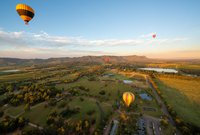Hunter Valley Property Market Update 1st Half of 2024
In Q4 2023, Hunter Valley recorded a median house price of $700,000 and a median unit price of $561,000. This represents annual (Q4 2022 – Q4 2023) growth of 2.4% for houses and 13.3% for units. During this time Total sales declined, by -1.8% (to 224 sales) for houses and by -2.9% (to 33 sales) for units. There is a market undersupply in Hunter Valley, as price growth is alongside less sales. Confidence has returned to Hunter Valley, with properties in high demand, as cash rates start to stabilise. This suggests now is an ideal time for owners to transact, especially with the low number of ready-to-sell stock planned for development.
Average vendor discount between Q4 2022 and Q4 2023 have widened to -3.9% for houses and remained relatively stable at -4.0% for units. Hunter Valley have favoured buyers for the past 12 months, as sellers are increasingly willing to accept an offer below the first list price. This is in contrast with early and mid-2022 when buyers had to offer a premium. With sale prices trending upwards, this creates a unique opportunity for sellers and buyers.
House rental yields in Hunter Valley was 3.7% in December 2023, higher than Sydney Metro (2.8%). This was paired with a 3.6% median house price increase in the past 12 months to Q4 2023, to $580 per week, and an -8.7% decline in the number of houses rented (to 221 houses). This suggests an undersupply in the house rental market, thus an opportunity for investors.
3-bedroom houses provided investors with +6.0% rental growth annually, at $620 per week.
The Hunter Region recorded a vacancy rate of 1.4% in December 2023, slightly below Sydney Metro’s 1.7% average. Vacancy rates in Hunter Valley have increased steadily over the past 12 months, due to investors re-entering the market and capitalising on tight vacancy rates. That said a 1.4% vacancy rate is still below the Real Estate Institute of Australia’s health benchmark of 3.0%, thus suggesting quicker rental occupancy in The Hunter Region. These key indicators create a conducive and sustainable environment for investors, despite the increase in median sale prices of property over the past 12 months.




